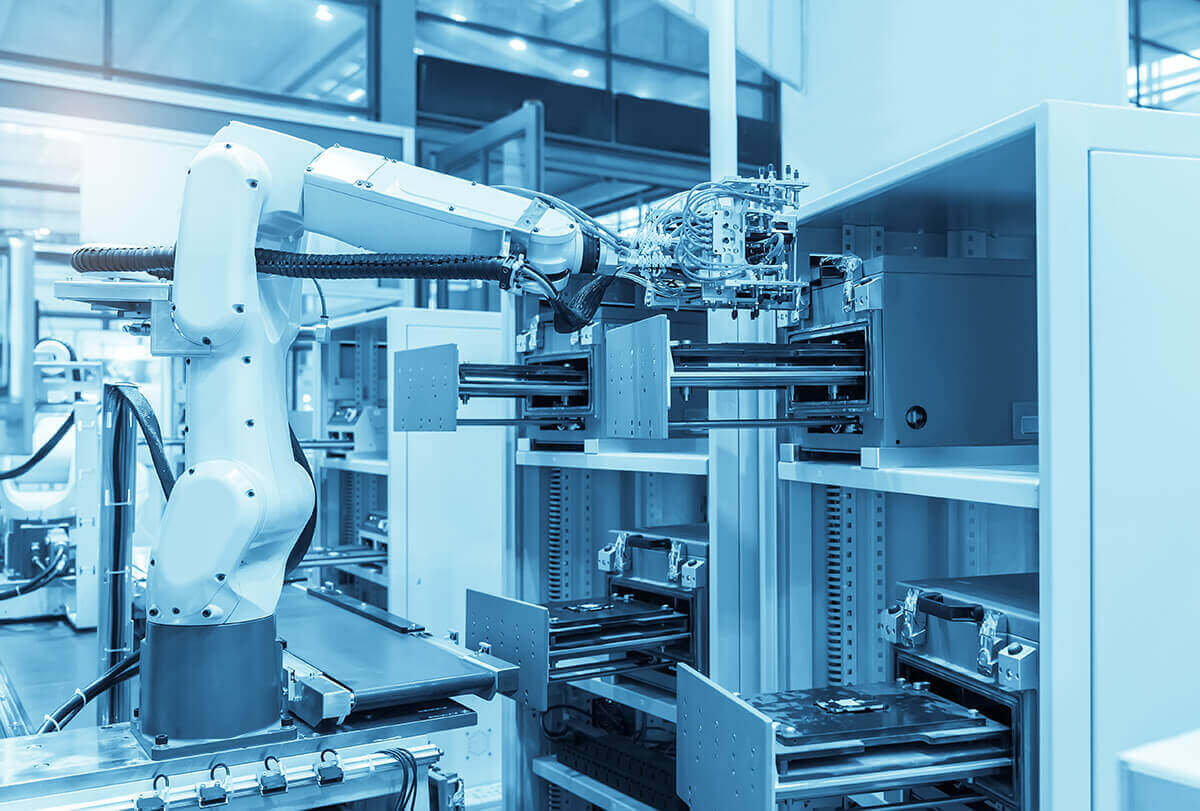In the era of digitalization and automation, it has become crucial to optimize operational productivity to remain competitive. How to achieve this? A promising solution is the use of machine learning to improve the availability of machines in the factory. This concept, which seems complex at first glance, can revolutionize your productivity by anticipating breakdowns and optimizing maintenance.
How important is machine availability?
Machine availability: definition
There machine availability is a key concept in the industrial world, defining the proportion of time a machine or system is in working order. It is calculated based on the actual operation time divided by the total time planned for the operation. High machine availability means your equipment is ready to produce when you need it.
However, it's not just about having a machine that runs constantly. Efficiency, reliability, production quality and personnel safety are all factors that come into play. There is no point having a machine available if it cannot do the necessary work efficiently and safely.
Why is machine availability crucial for your business?
Machine availability is the backbone of any factory. It plays a crucial role in productivity, performance and profitability. High availability translates into greater production capacity, which increases revenue. Conversely, an unavailable machine can lead to production delays, reduced customer satisfaction and lost revenue.
By improving machine availability with machine learning, you can not only increase your production capacity, but also reduce costs associated with repairs and maintenance. Better availability also means less stress on your staff, which can improve morale and productivity for the entire team.
Introduction to Machine Learning in Industry
Definition and operation of Machine Learning
In the industrial world, Machine Learning is an artificial intelligence (AI) technology that allows machines learn from data and make intelligent decisions without human intervention. Simply put, it is the art of giving machines the ability to learn without being explicitly programmed.
It works based on algorithms that consume large amounts of data, analyze that data to discover patterns and patterns, and then use those patterns to make decisions or predictions. Algorithms can be supervised (where the input and output are known) or unsupervised (where only the inputs are known and the system must discover the output).
The impact of Machine Learning on the industry
Machine Learning is revolutionizing the industry in various ways. It is used for optimize production, improve product quality, reduce waste, improve energy efficiency, and of course, increase machine availability.
Using machine learning models allows businesses to analyze machine data in real time, detect anomalies, and anticipate problems before they occur. This leads to a reduction in unplanned downtime, optimization of mttr and mtbf, increased productivity and reduced maintenance costs.
How does Machine Learning improve machine availability?
Early Detection of Failures with Machine Learning
One of the major applications of Machine Learning in industry is early detection of failures. By analyzing data from sensors installed on machines, machine learning algorithms can identify patterns indicating a possible impending failure.
The advantage here is twofold. First, by detecting problems earlier, you can schedule repairs during off-peak hours, minimizing the impact on production. Second, it can prevent more serious damage that could result from ignoring an emerging problem.
Predictive maintenance with machine learning
Predictive maintenance is another key application of Machine Learning in the context of improving machine availability. By analyzing historical and real-time data, machine learning algorithms can predict when a machine will need maintenance or repair. This allows maintenance to be planned more efficiently, reducing unplanned downtime and improving machine availability.
How to implement Machine Learning?
Choosing the Right Machine Learning Technology
To begin, it is crucial to choose your machine learning technology carefully. The best technology for you depends on several factors, including the type of your machines, the complexity of your production processes and the skills of your technical team.
There are several types of Machine Learning, each with their own strengths and weaknesses. For example, supervised learning is particularly effective at predicting machine failures from historical data, while unsupervised learning can be useful for detecting anomalies in real-time production data.
In short, there is no “best” machine learning technology. The key is to find the technology that best fits your specific needs.
Best practices for implementing machine learning in your organization
Once you have chosen the right technology, it is time to implement it in your organization. Here are some best practices to follow to ensure the success of this crucial step:
- Provide adequate training to your team: Machine Learning is a complex technology that requires specific skills. Make sure your team is well trained to use this technology effectively.
- Collect and clean your data: Machine Learning relies on quality data. Make sure you collect accurate and complete data from your machines, and clean it to eliminate errors and inconsistencies.
- Test and refine your model: Once your machine learning model is in place, test it regularly to ensure it is working as expected. Feel free to refine your model as you collect new data.
Anticipating the future: Machine Learning and machine availability by 2030
Trends and Predictions for Machine Learning in Industry
What does the future hold for machine learning and machine availability? If experts are to be believed, the future is bright. According to a PwC study, the global AI market is expected to reach $15.7 billion by 2030, with average annual growth of 55%.
This explosive growth will be fueled by several key trends, including increasing connectivity (through the Internet of Things), expanding data processing capabilities, as well as continued advances in machine learning algorithms.
Machine Learning, combined with other technologies such as 5G, will improve real-time communications between machines and management systems. This will facilitate even faster responsiveness and adaptability to changing production needs and market conditions.
Additionally, we can expect Machine Learning to become even more autonomous. Machines that can self-repair, adapt to new tasks without human intervention, or even design new processes to improve productivity may no longer be science fiction.
The challenges ahead
Despite the opportunities offered by machine learning, there are also challenges. Data security will be a major concern, especially with increasing connectivity. Businesses will need to invest heavily in data protection to avoid cyberattacks and data breaches.
Additionally, there will be increasing pressure for businesses to be transparent about how they use machine learning, particularly regarding automated decisions that may impact employees or customers.



